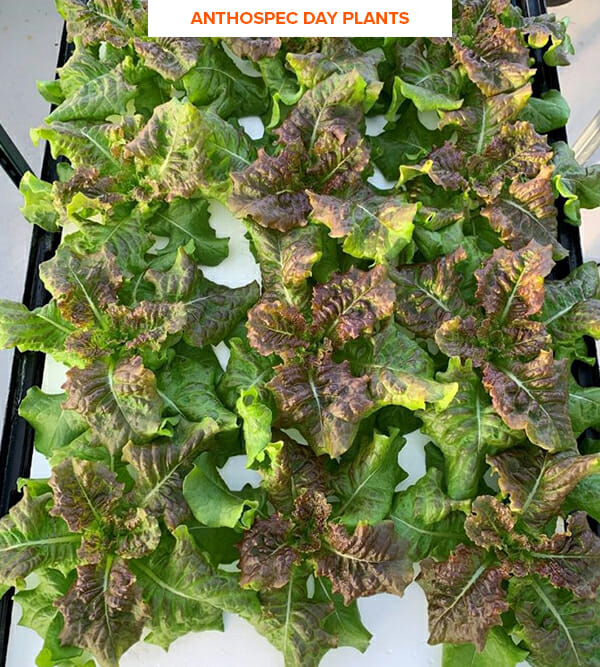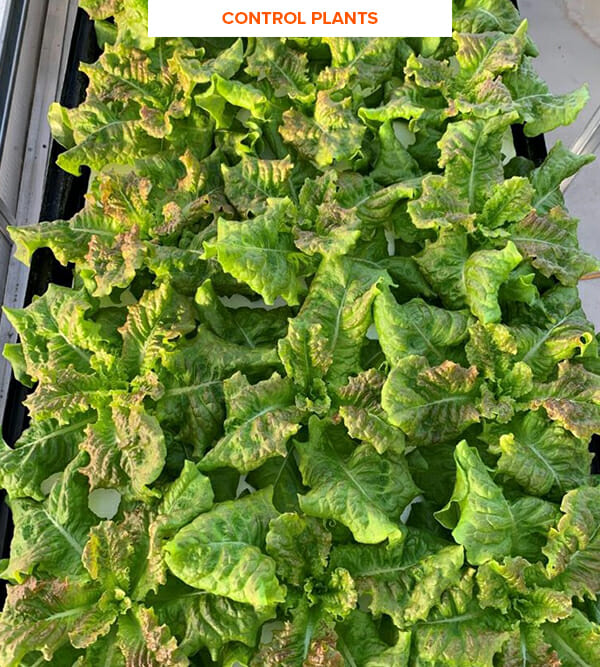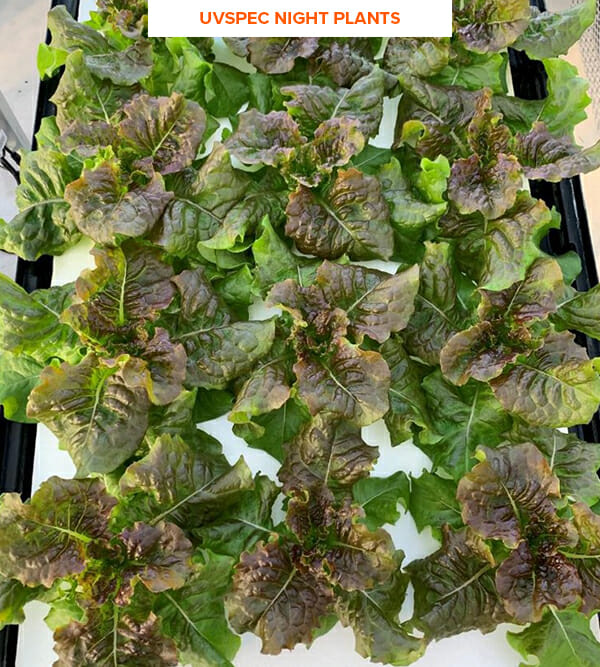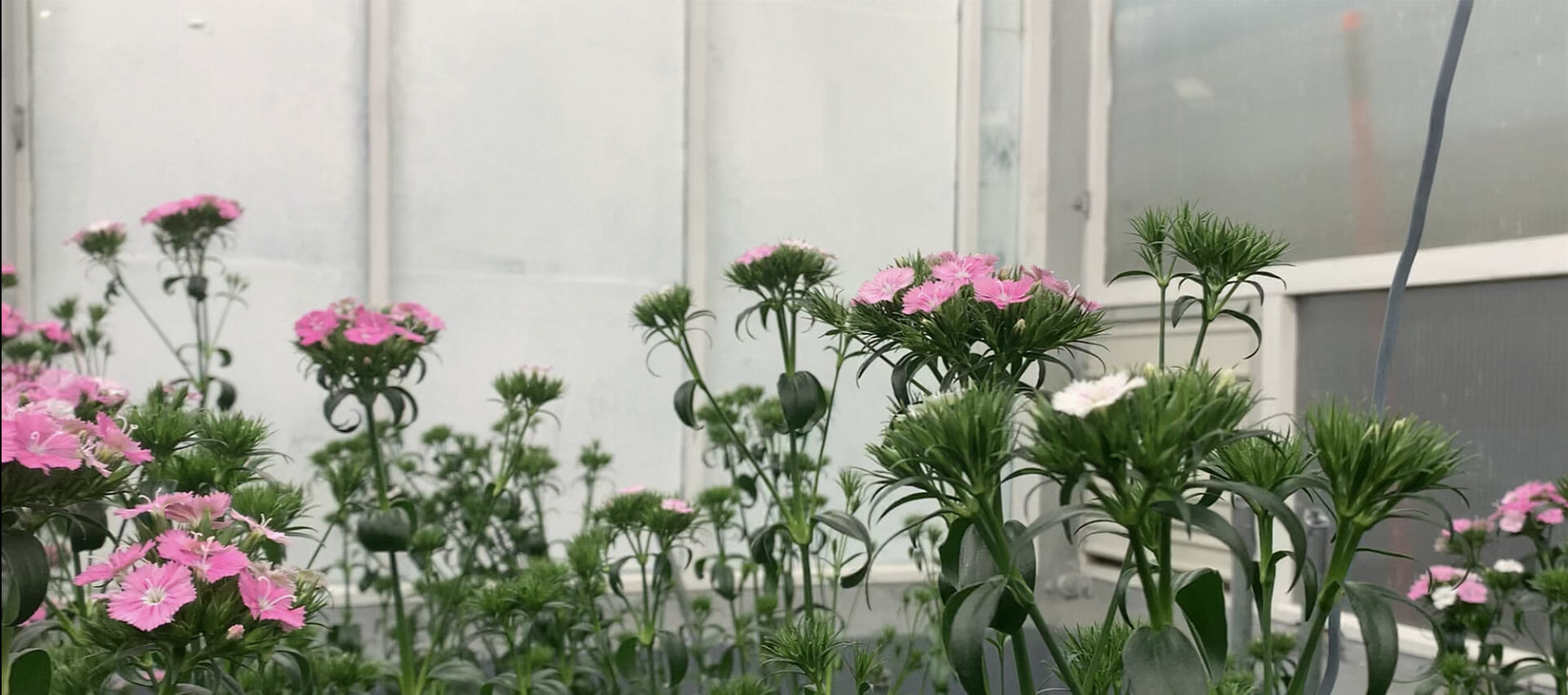The Effect of Supplemental Pre-Harvest Narrow-Band Light on the Production and Quality of Leafy Lettuce
About Texas A&M University’s Horticulture Research Program
The urban horticulture research program led by Dr. Genhua Niu at the Dallas Center focuses on developing cultivation and crop management best practices to address challenges facing the emerging controlled environment agriculture (CEA) industry.
Controlled systems for urban agriculture include peri-urban (suburban) greenhouses and indoor vertical farms. Dr. Niu’s research explores plant production in systems that implement existing and emerging CEA technology at varying degrees.

The Experiment
Agriculture has been an integral part of Texas A&M since its founding in 1876. Today, it remains one of the top-rated institutions for agriculture sciences. In this experiment, the research team is analyzing the effects of supplemental narrow-band light on the production and quality of leafy lettuce. Currently, growers in Texas are struggling to achieve full coloration of red-leaf lettuce varieties in the summer. The goal of the study is to discover the optimal UV-A/red-blue radiation dose in greenhouse production to enhance the pigmentation of red and purple varieties of leafy lettuce throughout different seasons.
In collaboration with Fluence scientists based in Austin,TX, the team deployed Fluence’s RAY44 LED lighting solutions using UVSpec (a UV-A wavelength) and AnthoSpec (50% red/50% blue wavelengths) paired with dimmers for precise control of light dosages throughout the finishing growth cycle. Before launching the study, researchers hypothesized that when compared to a no-supplemental light control, the end-of-production spectrum treatments would increase coloration and secondary metabolites (anthocyanin production) in the red-leaf lettuce. Anthocyanin pigments, also known as flavonoids, are responsible for the red, purple, and blue colors of many fruits, vegetables, and flowers.

The results of the study will determine if UV-A (UVSpec) or a red and blue spectrum (AnthoSpec) is more effective at increasing coloration and secondary metabolite production. They will also provide insights to identify if the supplemental light dosages are more effective when delivered during the day or at night.
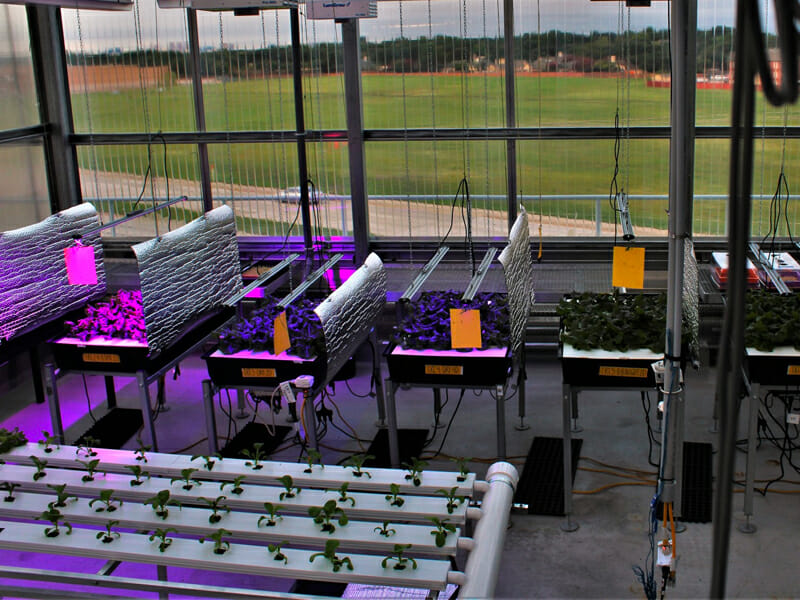

Grower Impact: Why it Matters
Growing consistent, high-quality produce year-round is a top priority for growers everywhere. With this research, growers in Texas and beyond can leverage data backed by science to achieve their cultivation goals regardless of the season. To see how other growers across the world are using finishing spectra for their leafy greens check out our innovator spotlight featuring Hallnas, a Swedish commercial farm producing fresh greens in the arctic circle.
About Fluence’s Research Program
The Fluence Research team conducts studies through partnerships with leading research groups around the world while also conducting research in-house at the company’s Photobiology and Research Lab in Austin, Texas. Fluence partners with industry consultants to advise on the commercial viability of the team’s research studies while concurrently proving our lighting solutions at a commercial scale through grower case studies led by Fluence’s Horticultural Services team.



